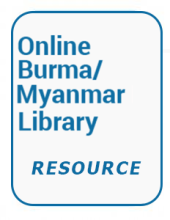Land Library
Welcome to the Land Portal Library. Explore our vast collection of open-access resources (over 74,000) including reports, journal articles, research papers, peer-reviewed publications, legal documents, videos and much more.
/ library resources
Showing items 28 through 36 of 1112....According to the 2016 Climate Risk Index, Myanmar is the second-most-vulnerable country in the world to the effects of climate change.
Internally displaced persons (IDPs) returning to their former villages are being sued for trespass by the Asia World and Shwe Padonmar companies who claim the land was given to them for palm oil plantations…
In Burma, where 70 percent of people earn a living through agriculture, securing land is often equivalent to securing a livelihood.
The present study on Myanmar focuses on customary tenure among upland ethnic
nationalities, where colonial and state land administration systems have been poorly integrated,
allowing customary systems to be sustained over time. Much like under British colonial power, the
Abstract: "Global economic change and policy interventions
are driving transitions from long-fallow swidden (LFS)
systems to alternative land uses in Southeast Asia’s uplands.
This study presents a systematic review of how these
A Comparative Study of Land Rights Systems in Southeast
Asia and the Potential of National and International Legal
Frameworks and Guidelines....."Land rights systems in Southeast Asia are in constant
Executive Summary:
"Recently, much attention surrounding Burma has focused on the democratic reform, 2015
elections and the future of the National League for Democracy (NLD)-led Government, whilst
Executive Summary: "Recently, much attention surrounding Burma has focused on the democratic reform, 2015 elections and the future of the National League for Democracy (NLD)-led Government, whilst a profound humanitarian crisis and continuing concerns of the ethnic minority communities in the sou
Executive summary:
"In January 2016 the government adopted a National Land Use Policy, which included the recognition
of customary land management practices. While this is a welcome first step in the necessary

